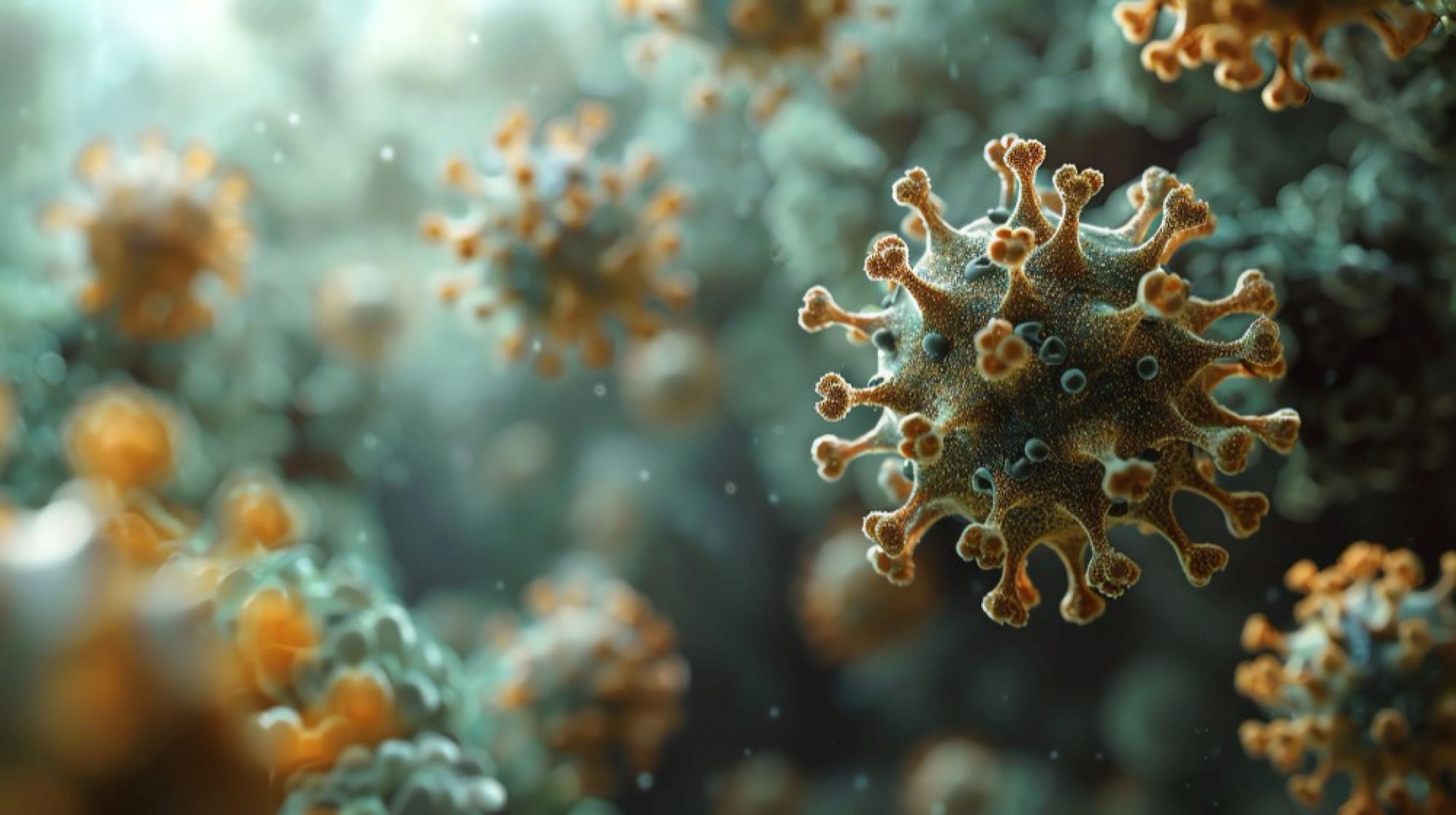Norovirus infection, often called the stomach flu virus, is one of the leading causes of viral gastroenteritis worldwide. It’s highly contagious and responsible for millions of foodborne illness cases each year, especially in schools, hospitals, cruise ships, and restaurants. Despite its short duration, a norovirus outbreak can spread rapidly, affecting large groups within hours.
From its transmission through contaminated food and water to its detection using the stool PCR test or norovirus antigen test, understanding the science behind norovirus outbreaks is critical for infection control and public health safety.
What Is Norovirus?
Norovirus is a small, non-enveloped, single-stranded RNA virus belonging to the Caliciviridae family. It primarily affects the intestinal lining, causing sudden-onset vomiting and diarrhea. Unlike influenza, the stomach flu virus does not involve the respiratory tract; instead, it targets the gastrointestinal system.
According to the Centers for Disease Control and Prevention (CDC), norovirus is the leading cause of acute gastroenteritis across all age groups, causing roughly 685 million cases annually worldwide, including over 200,000 deaths, mostly in young children and the elderly.
Why Norovirus Is Often Called the “Stomach Flu Virus”
While “stomach flu” is a misleading nickname, since norovirus is unrelated to influenza, the term remains common because both share symptoms like fever, nausea, and body aches. However, the stomach flu virus refers specifically to norovirus infection, a viral gastroenteritis that targets the digestive system, not the respiratory tract.
The Science of Norovirus Transmission
1. Person-to-Person Spread
Norovirus spreads primarily via the fecal–oral route. Tiny viral particles from an infected person’s stool or vomit can contaminate hands, surfaces, or food. Because only 10–100 viral particles can cause infection, norovirus outbreaks can spread explosively.
2. Contaminated Food and Water
Contaminated food, particularly raw produce, shellfish, or ready-to-eat meals, are common sources of foodborne illness during norovirus outbreaks. Infected food handlers are a frequent link in transmission chains.
3. Aerosolized Particles from Vomit
When an infected person vomits, microscopic droplets containing the stomach flu virus can become airborne, settling on surfaces or being inhaled accidentally.
4. Environmental Stability
One of the reasons norovirus spreads so efficiently is its stability outside the body. The virus can survive on surfaces for weeks, withstand freezing, and resist many common disinfectants. This resilience makes containment during viral outbreaks challenging.
Symptoms of Norovirus Infection
Symptoms of norovirus infection typically appear 12–48 hours after exposure and last for 1–3 days. Common signs include:
- Sudden vomiting and watery diarrhea
- Nausea and stomach cramps
- Mild fever and chills
- Headache and muscle pain
- Dehydration (dry mouth, fatigue, dizziness)
While most people recover without complications, severe dehydration can be dangerous for infants, older adults, and immunocompromised individuals.
The Biology Behind Norovirus Infection
The stomach flu virus infects the small intestine by binding to specific carbohydrate molecules on the intestinal epithelial surface called histo-blood group antigens (HBGAs). These molecules differ between individuals, which may explain why some people are more susceptible to infection than others.
Once inside the intestinal cells, norovirus disrupts the normal absorption process, leading to water and electrolyte loss, the hallmark of viral gastroenteritis. The virus also triggers an immune response, releasing inflammatory cytokines that worsen diarrhea and nausea.
Diagnosing Norovirus
While norovirus is often diagnosed clinically during outbreaks, laboratory confirmation plays a vital role in public health surveillance and infection control.
1. Stool PCR Test
The stool PCR test (polymerase chain reaction) detects norovirus RNA in stool samples with high accuracy.
- Advantages: It can identify very small quantities of viral genetic material.
- Use: Confirming norovirus infection in outbreak settings, hospitals, or foodborne investigations.
- Turnaround time: Results are available within hours, allowing quick containment measures.
2. Norovirus Antigen Test
The norovirus antigen test detects viral capsid proteins in stool samples.
- Advantages: Rapid and cost-effective screening during outbreaks.
- Limitations: Slightly lower sensitivity compared to PCR, but highly useful for point-of-care testing.
3. Complementary Tests
In some cases, additional stool tests help rule out bacterial or parasitic causes of viral gastroenteritis. A CBC test may assess dehydration or immune response severity, though it is not specific to norovirus.
Together, the stool PCR test and norovirus antigen test form the cornerstone of laboratory diagnosis, guiding both clinical management and epidemiological control.
How Norovirus Outbreaks Begin and Spread
1. In Food Service and Catering Environments
One infected food handler can trigger a massive foodborne illness event. Because the stomach flu virus withstands heating up to 60°C (140°F), improperly cooked food may still transmit infection.
2. In Closed or Crowded Settings
Cruise ships, hospitals, schools, and nursing homes frequently experience norovirus outbreaks because of shared facilities, close contact, and rapid turnover of individuals.
3. Waterborne Transmission
Contaminated drinking or recreational water can carry the norovirus infection to entire communities. Outbreaks have been reported following floods or failures in sanitation systems.
4. Secondary Transmission
Even after recovery, people can continue shedding the virus for up to two weeks, contributing to continued transmission if hygiene practices are poor.
Why Norovirus Outbreaks Are Difficult to Control
- Low Infectious Dose: Only a few viral particles can cause illness.
- Environmental Resistance: The virus survives on surfaces, fabrics, and food for long periods.
- Asymptomatic Carriers: Some individuals shed the virus without showing symptoms.
- Lack of Long-Term Immunity: Reinfection with different strains is common, even within months.
- Rapid Onset: Symptoms develop quickly, overwhelming containment efforts.
These features make norovirus one of the most persistent causes of viral outbreaks globally.
Prevention- Breaking the Chain of Transmission
1. Hand Hygiene
Frequent handwashing with soap and water is the most effective prevention strategy. Alcohol-based sanitizers are less effective against norovirus infection because the virus lacks an envelope.
2. Disinfection of Surfaces
Use chlorine-based disinfectants (bleach solutions containing at least 1,000 ppm sodium hypochlorite) to clean contaminated surfaces. Norovirus can resist most standard household cleaners.
3. Safe Food Practices
- Cook shellfish thoroughly to an internal temperature of at least 145°F (63°C).
- Wash fruits and vegetables before consumption.
- Avoid food preparation while symptomatic and for 48 hours after recovery.
4. Isolation and Outbreak Control
During viral outbreaks, infected individuals should stay home, especially if they work in healthcare or food service. Prompt use of the stool PCR test or norovirus antigen test helps identify cases early.
5. Public Health Surveillance
Health authorities monitor foodborne illness trends through networks like the CDC’s CaliciNet and the WHO Global Foodborne Infections Network to trace and control outbreaks.
The Role of Diagnostic Laboratories
Diagnostic laboratories are central to controlling norovirus outbreaks. Early detection with the stool PCR test or norovirus antigen test allows:
- Quick confirmation of infection in outbreak settings.
- Identification of specific viral strains for epidemiological mapping.
- Differentiation from bacterial or parasitic causes of gastroenteritis.
- Monitoring effectiveness of disinfection and sanitation programs.
Labs also collaborate with public health authorities to trace contamination sources, such as in restaurants or water supplies, preventing secondary viral outbreaks.
Public Health Perspective- Why Awareness Matters
Norovirus infection is not just a personal health concern, it is a global public health challenge. The CDC reports that in the U.S. alone, norovirus causes about 19–21 million illnesses, 100,000 hospitalizations, and 900 deaths annually.
Globally, the World Health Organization lists norovirus among the top causes of foodborne illness, accounting for one-fifth of all viral gastroenteritis cases. Public awareness, coupled with rapid diagnostic testing, remains key to limiting the spread.


